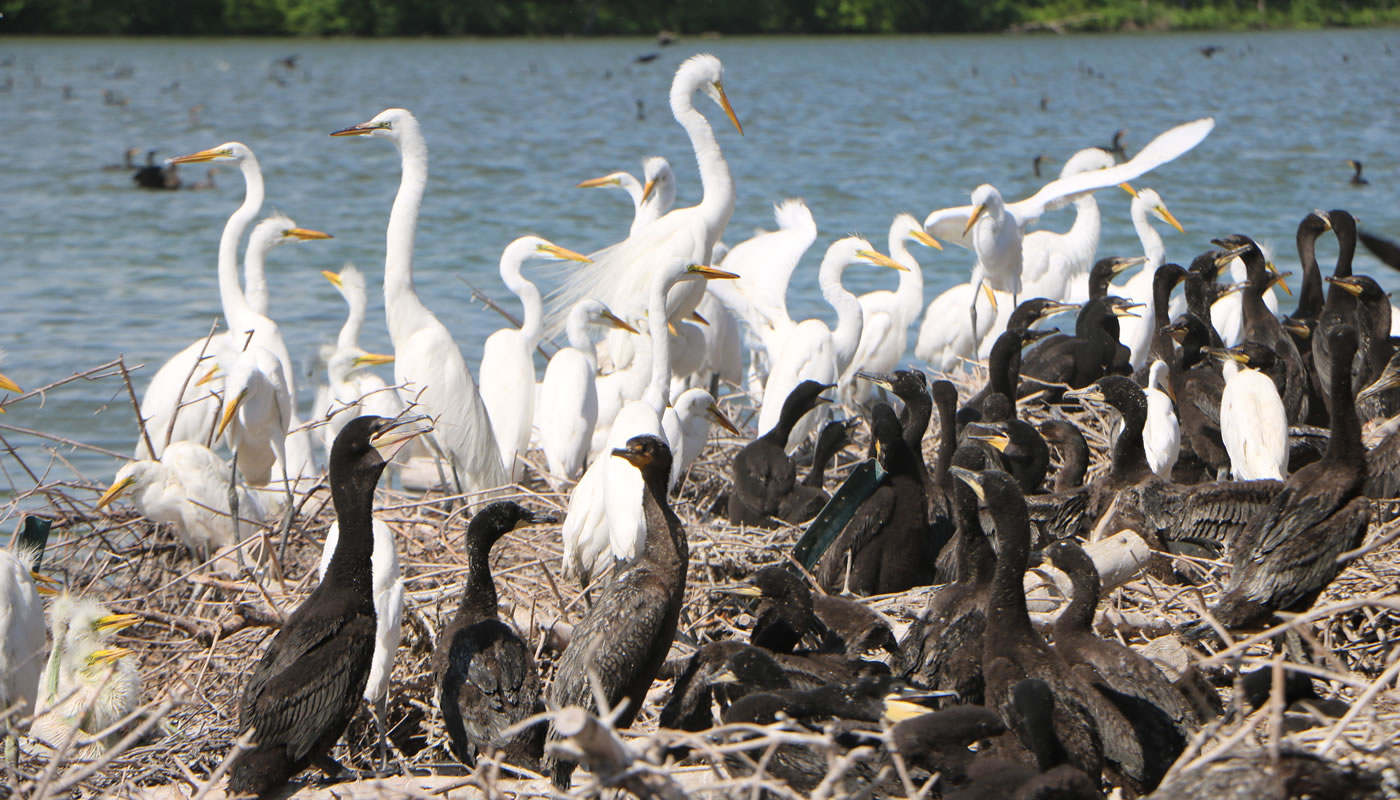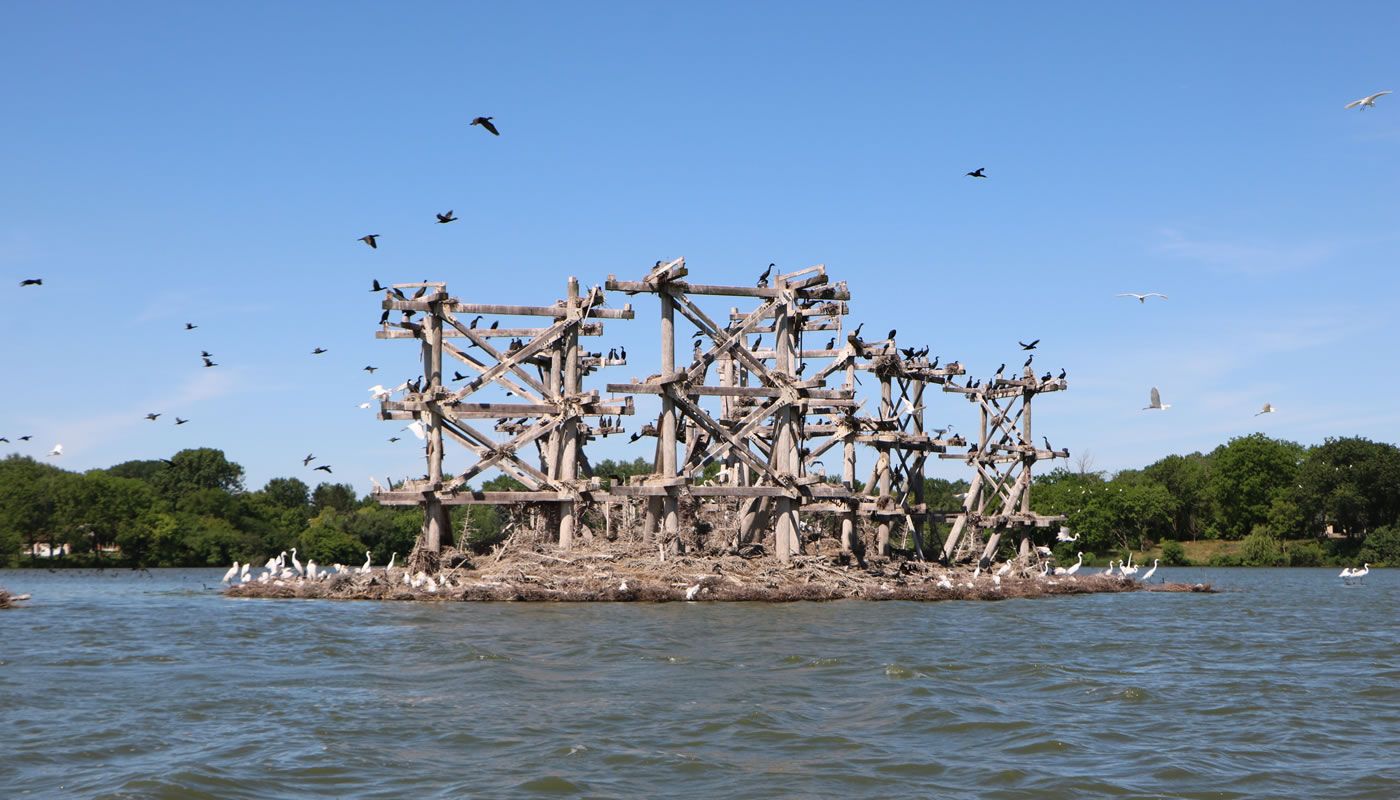The Baker’s Lake forest preserve is home to one of the most significant heron rookeries in the Midwest and offers many opportunities to view wildlife, especially for bird watchers. The site includes a 219-acre Illinois Nature Preserve that brackets the lake and a restored oak savanna.
On this page:
Locations & Things to Do
Baker’s Lake Younghusband Prairie
Entrance
Things to Do & Amenities
- Parking
- Hiking & Walking
- No Fishing
- Birding Hotspot
- Volunteer Opportunities
Hours
Year-round: Sunrise to SunsetClosures & Alerts
- NO ISSUES 8/17/2025: Open during normal hours.
Baker’s Lake Nature Preserve
Location
Things to Do & Amenities
- No Parking
- Hiking & Walking
- No Fishing
- Birding Hotspot
- Volunteer Opportunities
- No Dogs
- Service dogs are allowed at most public locations. View accessibility policies.
Hours
Year-round: Sunrise to SunsetClosures & Alerts
- NO ISSUES 8/17/2025: Open during normal hours.
Baker’s Lake Overlook
Entrance
Things to Do & Amenities
- Parking
- Hiking & Walking
- No Fishing
- Birding Hotspot
- Volunteer Opportunities
Hours
Year-round: Sunrise to SunsetClosures & Alerts
- NO ISSUES 8/17/2025: Open during normal hours.

Nature Notes
Baker’s Lake is a birdwatcher’s dream. Bring binoculars or a spotting scope to view all of the bird life on the lake and in the prairie. At the north end of the lake, visitors can observe the island rookery from a viewing platform. The rookery is made of several large wooden structures, each with three nesting platforms. Through binoculars or a strong camera lens, the structures look like scaffolding. Come in June to catch the height of breeding season, when the rookery becomes a truly wild and noisy place.
Each year, the Forest Preserves of Cook County’s wildlife division leads an expedition to the island as part of its heron rookery banding program. During the visit, the biologists and veterinarians draw blood, which allows them to understand the health of the birds as well as the health of the environment. The bands allow researchers to track movements of the birds, which will migrate to other states during colder months.
In spring and early summer, great blue herons, great egrets and the state-endangered black-crowned night-heron all nest within the rookery, one of the largest in Illinois. The Forest Preserves built the manmade structure in 2000 to provide extra nesting space on the lake’s island, often overcrowded with birds.
Herons, egrets, and breeding cormorants start arriving in late March or early April. Other water birds, including ducks, mergansers and geese, use the lake as a migratory stopover and start arriving in March and April. Thousands of coots, which look like ducks but are more closely related to sandhill cranes, rest on the water during summer months. Pied-billed grebes, horned grebes, ring-necked ducks, scaups, wigeons, buffleheads, common loons, northern shovelers gadwalls and blue-winged teals can also often be spotted in the lake.
Other wildlife taking advantage of Baker’s Lake habitat mix include northern harrier, red-headed woodpecker and coyotes.
Read more about the heron rookery and banding program:
- Great Egrets Tagged, Medical Work-ups Conducted in the Forest Preserves of Cook County (June 2018)
- Great Egret Recorded at Cape Canaveral (April 2015)
Volunteer Opportunities
Baker’s Lake, home to one of the most significant heron rookeries in the Midwest, is a birdwatcher’s dream. Volunteer and help restore bird habitat and improve biodiversity. Workday tasks include removing invasive vegetation, harvesting native seed, and other restoration activities.

